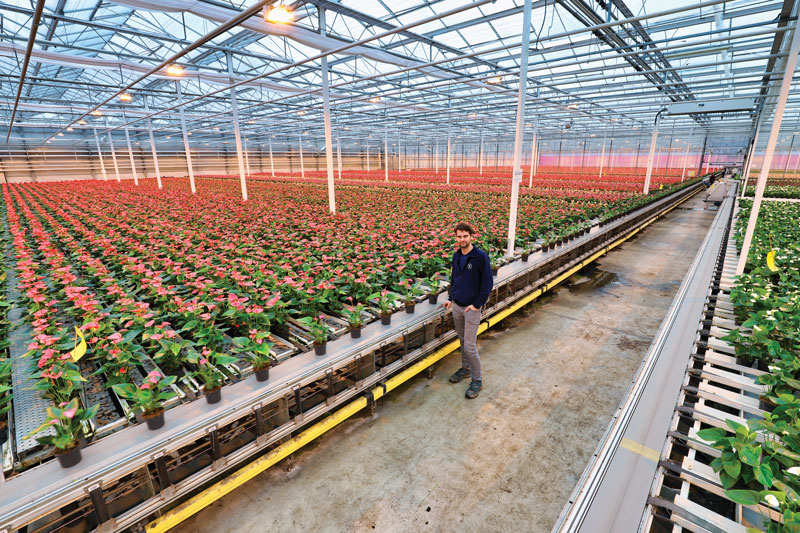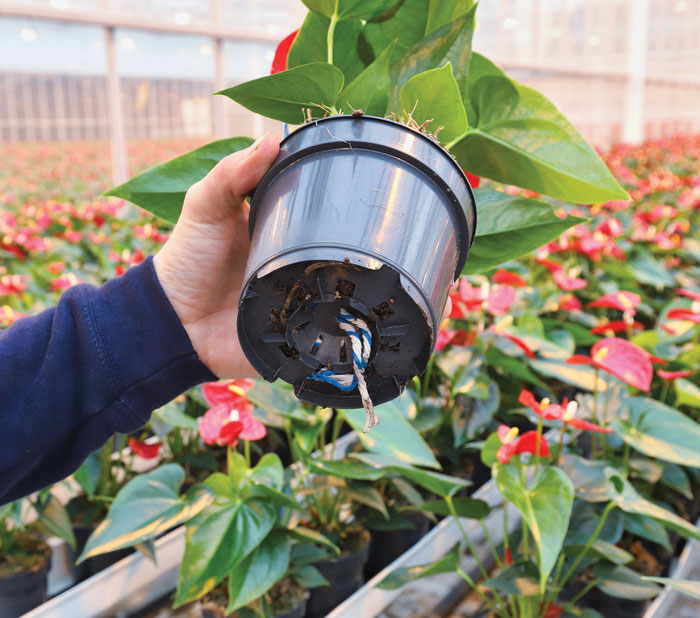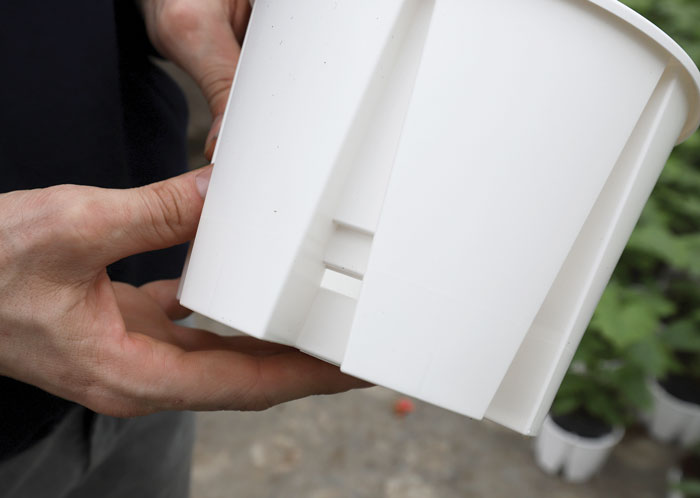3/1/2020
Going 100% WaterWick
Chris Beytes

 After two years of in-house testing, Karma Plants will be the first large-scale greenhouse on the planet to grow 100% of its crops using WaterWicks. That’s more than three million anthuriums, in five sizes from 9 cm to 27 cm (3.25 in. to 10.5 in.) in about a million square feet of greenhouse (they’ll be doing foliage plants, too—a new crop for them). We visited the Bemmel, Netherlands, nursery in January and met with second-generation co-owner Glenn Langelaan (pictured) to learn more.
After two years of in-house testing, Karma Plants will be the first large-scale greenhouse on the planet to grow 100% of its crops using WaterWicks. That’s more than three million anthuriums, in five sizes from 9 cm to 27 cm (3.25 in. to 10.5 in.) in about a million square feet of greenhouse (they’ll be doing foliage plants, too—a new crop for them). We visited the Bemmel, Netherlands, nursery in January and met with second-generation co-owner Glenn Langelaan (pictured) to learn more.
What is WaterWick? It’s a wick that gets inserted through a punched hole in the bottom of your grow pot (any pot works), with a few inches of both ends left dangling from the bottom. The wick makes a connection between the irrigation water and the root medium, allowing the plant to take in as much water, or as little, as it needs. It can draw water from a reservoir pot, a tray, a flood floor or—as in the case of one of Karma Plants’ growing ranges—the ebb and flow troughs of a “walking plant” system.
WaterWick was invented and patented by Mike Rimland of Costa Farms, in partnership with Visser Horti Systems, after two years of intensive testing of hundreds of potential wick materials. Visser developed the machine that punches the hole in the pots and inserts the wick.
Mike created WaterWick (called Wick & Grow by Costa for trademark reasons) to improve retail shelf life and consumer success. He didn’t consider it a grower tool, but Glenn has found three benefits of growing with WaterWick: uniformity, quality and sustainability.
 Pictured: The WaterWick (top) and the reservoir pot that Karma Plants will be using for any plants grown on flood floors. The green growing pot sits inside this pot.
Pictured: The WaterWick (top) and the reservoir pot that Karma Plants will be using for any plants grown on flood floors. The green growing pot sits inside this pot.
Anthurium are notoriously non-uniform, even when using the best genetics. The wick improves uniformity by allowing each plant to access the perfect amount of irrigation water. Larger plants can take up more, smaller ones less. No plant on the flood floor or trough is too wet or too dry. This means less grading and fewer plants going back into the greenhouse to grow on for a few more weeks.
It also means less plant stress, which helps with disease and insect resistance. With more uniformity and fewer disease issues, overall plant quality is better. Plants finish faster, too, giving them more turns in the greenhouse.
Lastly, says Glenn, retailers are demanding more sustainable plants, grown without peat, and that last longer at retail. With WaterWick, Karma Plants can use alternative media, such as coir, and retailers can make use of water-reservoir benches or trays that require less employee time.
As for the added cost, Glenn states, “We don’t want to talk about cost, but what we provide to retailers who are now throwing 20% or 30% of the plants away. With the wick, they don’t have any waste. Then they can easily pay more for plants with wicks. And they will be making more money than now.” GT